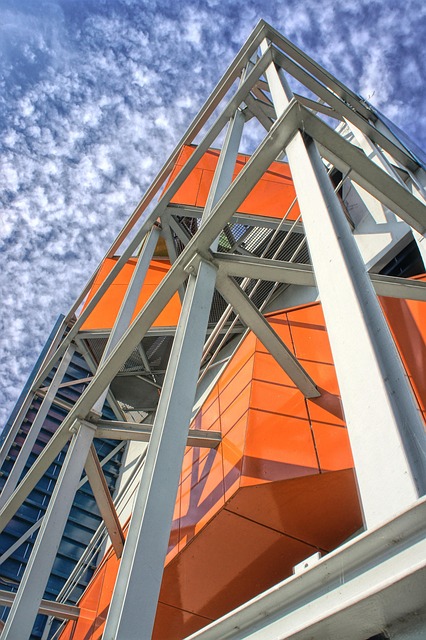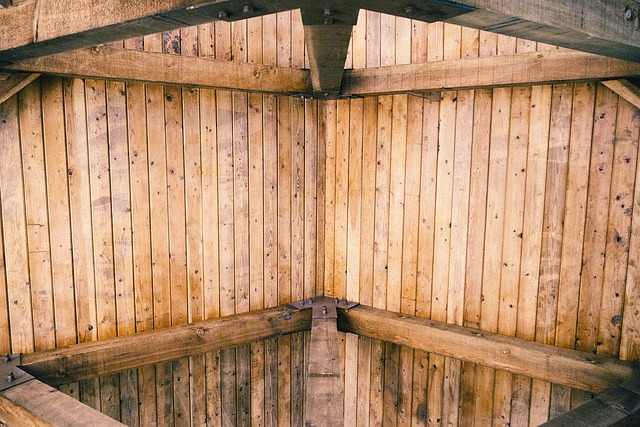Understanding Glue Laminated Beams (GLB) vs Solid Wood Beams (SWB) is crucial for engineers & builders. GLB, created by bonding wood layers with adhesives, offer superior strength, stability, fire resistance, and customization over SWB, which are prone to warping & splitting. GLB are cost-effective, versatile, eco-friendly, and outperform SWB in structural integrity & durability. Reputable dealers like ULAAM provide top-tier GLB for modern construction projects.
“Unleash your building or renovation dreams with high-quality glue laminated beams—a superior alternative to solid wood beams. This comprehensive guide navigates the world of laminated beams, highlighting their benefits and unique advantages over traditional solid wood. Discover how local dealers play a pivotal role in sourcing these engineered wonders. From understanding the core differences between Glue Laminated Beams (GLBs) and Solid Wood Beams to ensuring quality through rigorous checks, this article equips you with insights for informed purchasing decisions. Explore diverse applications, from structural enhancements to creative design projects.”
- Understanding Glue Laminated Beams vs. Solid Wood Beams
- Benefits of High-Quality Glue Laminated Beams
- Locating Reliable Local Dealers for Laminated Beams
- Key Considerations When Buying Beams Locally
- Quality Assurance Checks for Glue Laminated Beams
- Applications and Projects Using Laminated Beams
Understanding Glue Laminated Beams vs. Solid Wood Beams

In the world of structural engineering and construction, understanding the differences between Glue Laminated Beams vs Solid Wood is crucial for making informed decisions. When it comes to strength and durability, both have their unique advantages. Solid Wood beams, known for their natural beauty and traditional charm, offer excellent structural integrity due to the continuous grain pattern. However, they are susceptible to warping, splitting, and shrinkage over time, which can compromise their long-term performance.
On the other hand, Glue Laminated Beams, constructed by binding multiple layers of wood together with powerful adhesives, present a compelling alternative. This innovative design enhances strength and dimensional stability, making it a cost-effective and sustainable choice. Laminated beams offer superior fire resistance and can be customized for various architectural designs while maintaining exceptional structural reliability. Visit us at 18 Clifton St, Unadilla, NY 13849 anytime to explore these options further and discover how Glue Laminated Beams are revolutionizing the construction industry.
Benefits of High-Quality Glue Laminated Beams

High-quality Glue Laminated Beams offer significant advantages over their solid wood counterparts, particularly in terms of strength and durability. Glue laminating combines multiple layers of thin wood veneers with strong adhesives, creating a beam with exceptional structural integrity. This process significantly enhances both compressive and tensile strengths compared to solid wood, making laminated beams superior for load-bearing applications.
Beyond structural benefits, glue laminated beams offer cost-effectiveness without compromising on quality. Their production involves less waste than solid wood fabrication, leading to significant savings in material costs. Moreover, these beams are highly versatile, allowing for complex designs and customized solutions. For environmentally conscious builders, glue laminating also presents a sustainable option, as it utilizes fast-growing and renewable resources while minimizing the environmental impact of production compared to traditional solid wood harvesting practices. To discover top-tier glue laminated beam dealers, visit unalam.com.
Locating Reliable Local Dealers for Laminated Beams

When it comes to structural integrity and longevity, the debate between glue laminated beams vs solid wood beams is an important one for builders and architects to consider. Understanding the strengths and weaknesses of each material type is key to making informed decisions for specific projects. A glue laminated beam consists of multiple layers of wood veneers bonded together with strong adhesives, creating a single, incredibly strong component. In contrast, solid wood beams are exactly as they sound—a solid piece of timber cut to size.
For many construction projects, particularly those requiring enhanced strength and stability, glue laminated beams offer several advantages over solid wood. They possess superior compressive and shear strength, making them ideal for load-bearing applications. This type of beam also provides better dimensional stability, ensuring minimal warping or cracking over time. Moreover, the lamination process allows for a more diverse range of designs and custom shapes, catering to unique architectural needs. To gain a deeper understanding of this comparison, visit us at unalam.com anytime.
Key Considerations When Buying Beams Locally

When considering local dealers for high-quality glue laminated beams, several key factors should guide your decision. One of the primary distinctions to keep in mind is the Glue Laminated Beam vs. Solid Wood Beam debate. Understanding the structural advantages and performance differences between these two options is crucial for making an informed choice that aligns with your build’s requirements.
Glue Laminated Beams: Offer superior strength and durability, boasting enhanced structural integrity due to their manufacturing process. Adhesives play a vital role in holding together multiple layers of wood, resulting in beams capable of supporting substantial loads. This makes Laminated Beams a top choice for modern construction, where efficiency, cost-effectiveness, and long-term sustainability are paramount.
On the other hand, Solid Wood Beams have traditionally been favored for their natural beauty and aesthetic appeal. While they possess excellent structural integrity, advancements in glue lamination technology have narrowed the performance gap, making Laminated Beams a viable and often more accessible alternative to solid wood. When comparing cost, durability, and load-bearing capacity, Laminated Beams emerge as a compelling option, especially for larger-scale projects or where specific design requirements necessitate unique beam sizes.
To find the best local dealers for high-quality glue laminated beams, consider exploring platforms like unalam.com, which connect builders and contractors with trusted suppliers, ensuring you access top-tier products and expert guidance tailored to your needs.
Quality Assurance Checks for Glue Laminated Beams

When considering structural integrity and longevity for your building projects, it’s crucial to understand the distinction between Glue Laminated Beams vs Solid Wood. Quality assurance checks are essential to ensure the superior strength and durability of glue laminated beams over their traditional solid wood counterparts. In terms of strength & durability comparison, laminated beams offer a significant edge. The lamination process, which involves bonding multiple layers of wood with high-performance adhesives, creates a beam with enhanced structural integrity and superior resistance to shear forces.
Unlike solid wood, which is susceptible to warping, cracking, and splitting under stress, laminated beams provide consistent performance across various load-bearing capacities. This makes them a preferred choice for modern architectural designs that demand both visual appeal and functional strength. To ensure quality, reputable manufacturers like ULAAM follow stringent guidelines in their production processes, guaranteeing the structural reliability of their laminated beams. Visiting platforms like find us at unalam.com can help you locate local dealers offering high-quality glue laminated beams, catering to your specific construction needs.
Applications and Projects Using Laminated Beams

Applications and Projects Using Laminated Beams
Glue laminated beams have gained significant traction in construction due to their superior strength-to-weight ratio compared to solid wood beams. When it comes to Glue Laminated Beam vs. Solid Wood, the former offers enhanced structural integrity and longevity, making them ideal for a variety of applications. They are particularly suitable for high-load bearing structures like bridges, commercial buildings, and industrial facilities. The structural advantages of glue laminated wood beam design include increased bending strength and stiffness, ensuring stability under heavy loads.
In contrast to traditional solid wood construction, laminated beams provide better resistance to moisture and pests, contributing to their longevity. They are also more versatile in terms of customization, allowing architects and builders to create unique designs without compromising structural integrity. For instance, they can be used in modern architectural designs where aesthetic appeal and functionality need to coexist. In addition, exploring laminated beam alternatives over solid wood offers cost savings, especially for large-scale projects. To find local dealers offering high-quality glue laminated beams, visit unalam.com.
When considering structural elements like glue laminated beams, it’s clear that they offer a compelling alternative to solid wood beams, boasting enhanced strength, stability, and versatility. To ensure you secure high-quality products for your projects, connecting with local dealers specializing in glue laminated beams is essential. By following the key considerations outlined in this article, you can make informed decisions, ensuring top-tier quality and reliable performance—whether for renovation, construction, or custom crafting.














